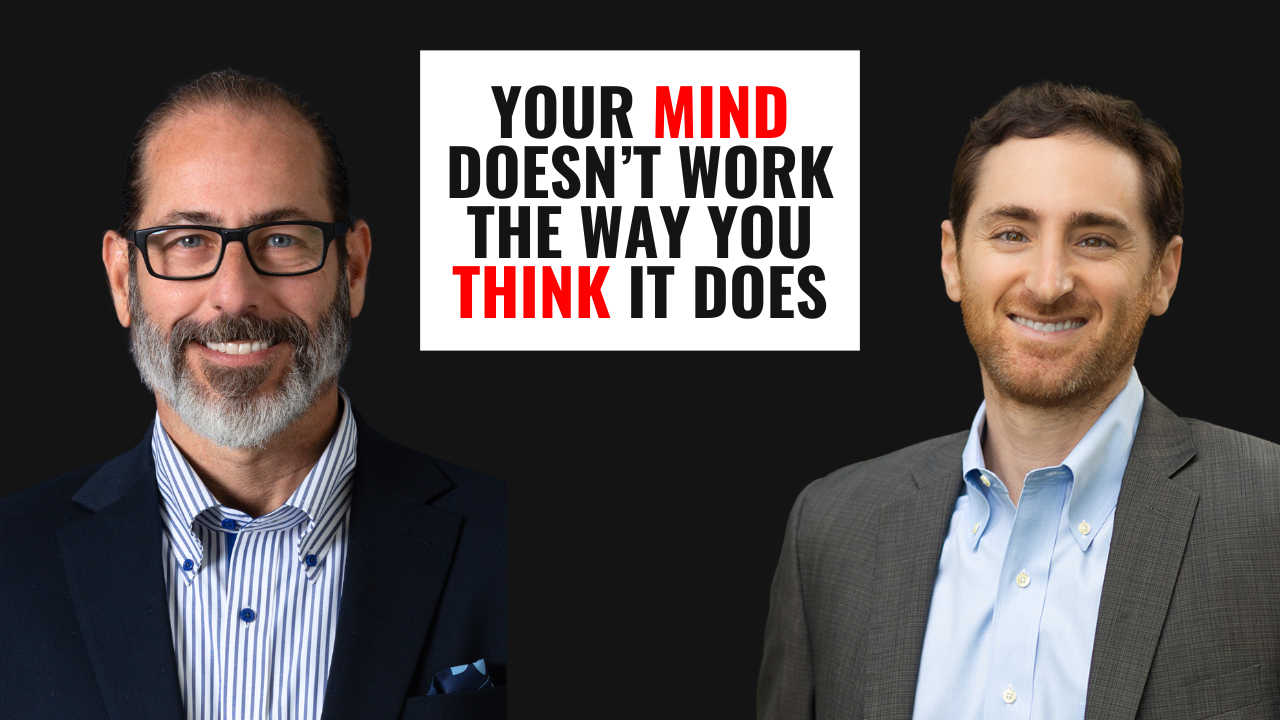How Water Really Works in the Body: Dr. Gerald Pollack Redefines the Science of Life
Aug 22, 2025
Everything You’ve Been Told About Water Is Wrong
For your entire life, you’ve been told the body runs on ATP, food calories, and your heart pumping blood. But what if that was a lie?
In this episode of The True Health Report, Dr. Andrew Kaufman and Dr. Gerald Pollack reveal the suppressed science of structured water (H₃O₂), the hidden fourth phase of water that powers your cells, charges your body, and drives blood flow without relying on your heart alone.
This breakthrough discovery turns biology upside down… and threatens the entire foundation of mainstream medicine.
How Your Energy Has Been Stolen
The human body doesn’t work the way you’ve been told in school. Your real energy doesn’t come from ATP. It comes from light, charge, and structured water working together inside your cells.
Infrared light builds the charge your body needs, just like photosynthesis does for plants. Structured water is the conductor. And your body becomes its own living battery.
From Theory to Transformation
Structured water isn’t just a scientific theory… it’s the missing key to your health freedom.
Dr. Kaufman and Dr. Pollack explore the body’s natural battery, how it recharges your cells, and reignites the vitality you were designed to have.
No prescriptions. No dependency. Just light, water, and your biology working in perfect harmony.
Free Download: Dr. Kaufman’s Ultimate Detox Protocol
If your body’s real power source is structured water, then protecting and rebuilding it becomes the key to lasting health and vitality.
Dr. Kaufman’s Ultimate Detox Protocol isn’t just about avoiding poisons, it’s about creating the perfect environment for structured water to thrive inside your cells. By clearing blockages and restoring your body’s natural detox pathways, you give your body the ability to charge itself naturally… The way it was designed.
This simple, step-by-step guide shows you how to support your body’s internal “water battery,” unlock real cellular energy, and reclaim sovereignty over your health.
“This protocol changed my life.”
“My mother’s kidney function doubled.”
“We feel 20 years younger.”
Links
https://sci-hub.st/https://doi.org/10.1002/9780470122464.ch4
https://pubmed.ncbi.nlm.nih.gov/13295245/
https://www.amazon.com/Charged-Unexpected-Electricity-Workings-Nature/dp/0988778912
https://www.amazon.com/Fourth-Phase-Water-Beyond-Liquid/dp/0962689548/134-4823638-2390103
Transcript
Dr. Andy: I’m Andy Kaufman, and today I’m joined by a returning guest who has made major contributions to what I’d call the “new biology,” especially regarding water: Dr. Gerald Pollack, author of The Fourth Phase of Water. He’s also releasing a new book, Charged, now available for pre-order. Dr. Pollack’s work is groundbreaking and will be remembered as a major contribution to science, even if it’s not yet widely recognized. I feel very fortunate to have him here. Welcome, Dr. Pollack.
Dr. Pollack: Thank you, Andy, I’m delighted to be here.
Dr. Andy: It’s rare that I get to speak with a living legend. Your humility aside, your work has shifted how we think about water—not as a passive background solvent, but as an active, structured substance with biological importance. Could you explain for new listeners what the “fourth phase” of water is?
Dr. Pollack: Certainly. The idea that water inside the cell differs from ordinary liquid water goes back to Gilbert Ling, a controversial but brilliant figure. He argued that cellular water isn’t random like water in a glass but instead structured—like molecules stacked in an ordered arrangement. I was intrigued by his evidence and began my own research. We confirmed his insight that intracellular water is structured, but we found it wasn’t exactly what Ling described.
The structured water we identified is not H₂O but H₃O₂, with distinct properties—most notably, a negative charge. At first this didn’t make sense; how could neutral water produce a negatively charged phase? What we found is that this negatively charged zone always exists alongside an adjacent positively charged zone. Together, they balance to neutrality. We call this “EZ water,” or exclusion-zone water.
Dr. Andy: To summarize: ordinary bulk water consists of molecules moving randomly, while structured water forms ordered arrangements because of water’s dipolar nature. Unlike bulk water, structured water carries a negative charge and coexists with positively charged water, creating electrical potential—essentially a battery. This battery-like property could play critical roles in biology.
Dr. Pollack: Exactly. We’ve shown that this electrical potential can drive flow. For example, if you immerse a hydrophilic tube in water, flow begins spontaneously through the tube and continues indefinitely. That energy comes from the charge separation within structured water. In fact, even in the cardiovascular system, blood flow continues after the heart stops, as shown in multiple studies. This means blood vessels themselves contribute to flow, not just the heart.
Dr. Andy: This resolves a long-standing puzzle: how can blood cells move through capillaries narrower than their diameter? Structured water and charge separation provide the missing mechanism. And recent work suggests the heart may be less a pump and more a vortex generator, aligning with your findings. But where does the energy for structured water come from?
Dr. Pollack: We struggled with that question until a student discovered it by accident. He shone light on a water chamber and saw the exclusion zone expand. We later confirmed that infrared light, especially beyond red wavelengths, is the main driver of EZ formation. In other words, light—just as in photosynthesis—separates charge in water. This means our bodies, like plants, harvest energy from light.
Dr. Andy: That explains why red and infrared light therapies show benefits, though most devices use non-optimal wavelengths. If companies matched your absorption findings, the results might be even more impressive. So the “recipe” for structured water seems to be: water, a hydrophilic surface, and infrared light.
Dr. Pollack: That’s part of it. We also found that negative charge, such as from an electrode, can create EZ water even without a hydrophilic surface. In fact, alkaline water machines may work this way, generating negatively charged water. Japan even prescribes such water clinically.
Dr. Andy: Though, given government involvement, I’m skeptical of its use. But your point is clear: structured water doesn’t require alkalinity—it requires charge.
Dr. Pollack: Correct. Our experiments show a strong correlation between alkaline water and excess electrons, meaning alkaline water often does carry negative charge.
Dr. Andy: Are there reliable ways to measure EZ water?
Dr. Pollack: Yes. UV-visible spectroscopy can detect an absorption peak at ~270 nanometers. A sharp peak indicates abundant EZ water, while bulk water shows no such peak. Though semi-quantitative, this method is simple and accessible in any chemistry lab. Other methods, like refractive index measurements in cells, also show promise.
Dr. Andy: And does EZ water correlate with health?
Dr. Pollack: Strongly. Healthy cells have more EZ water and a robust negative electrical potential. Diseased cells show reduced EZ and lower potentials. I argue that pumps and channels cannot account for membrane potentials—the energy would be insufficient. Instead, structured water itself generates these potentials.
Dr. Andy: This raises the deeper question: if ATP is not the main source of energy, what is?
Dr. Pollack: The classical view rests on a 1941 paper by Lipmann, which proposed ATP’s “high-energy phosphate bond.” But later research by Morales and Podolsky found no such bond, and others have also challenged the theory. If ATP doesn’t carry the energy we think, then structured water and its electrical properties may be the true source. Infrared light, omnipresent in our environment, constantly powers EZ formation. It could provide not just some but perhaps all of the body’s energy needs.
Dr. Andy: That would make sense, especially given research showing toxins disrupt EZ formation, which could explain much of modern illness. Another interesting angle is grounding—the Earth is negatively charged, while the atmosphere is positive. Living underground or closer to the Earth’s charge might extend lifespan, as seen in termite queens or cave-dwelling species.
Dr. Pollack: Exactly. Negative charge from the Earth supports EZ formation and health, while cosmic rays bombard us with positive charges. This charge balance may profoundly affect longevity.
Dr. Andy: It’s ironic that what we need for health is “negative” charge, though in language negative sounds bad. Maybe Franklin’s choice to label electrons “negative” was a misdirection.
Dr. Pollack: If he’d called them positive, we’d have been in better shape!
Dr. Andy: Before we close, tell us briefly about your new book.
Dr. Pollack: It’s called Charged: The Unexpected Role of Electricity in the Workings of Nature. I examine phenomena we think we understand—gravity, weather, flight, even sailing—and show that many of our explanations don’t hold up. I propose that charge interactions underlie much of what we observe in nature.
Dr. Andy: Fascinating. Gerald, this has been an illuminating discussion. I look forward to reading your book.
Dr. Pollack: Thank you, Andy. The pleasure has been mine.
Stay connected with news and updates!
Join our mailing list to receive the latest news and updates from Dr. Andrew Kaufman.




